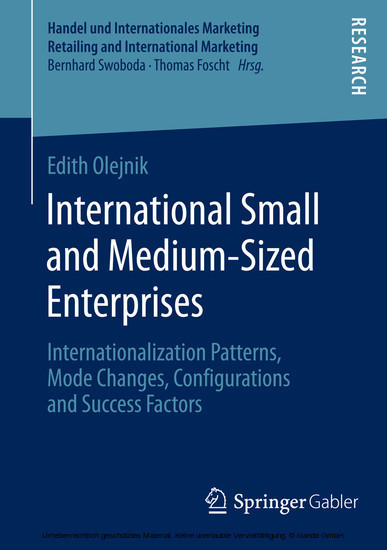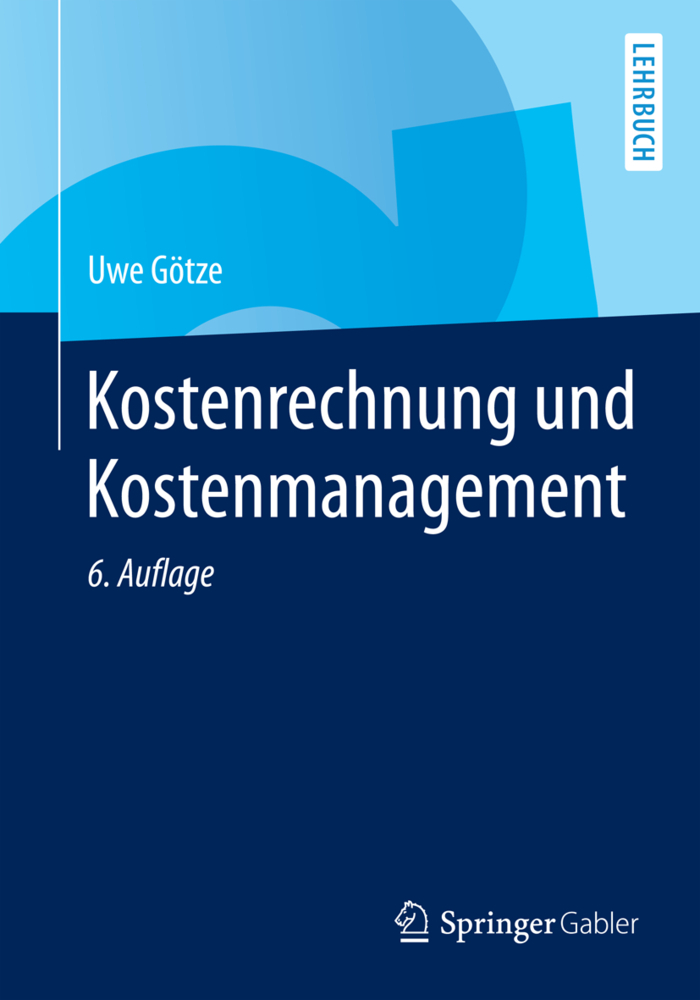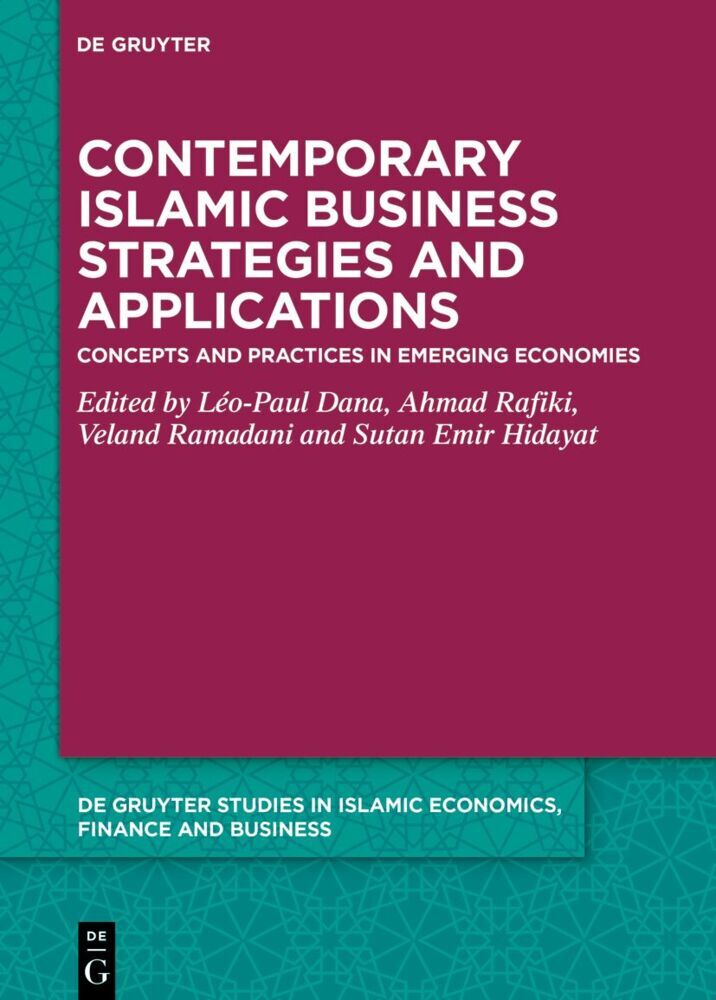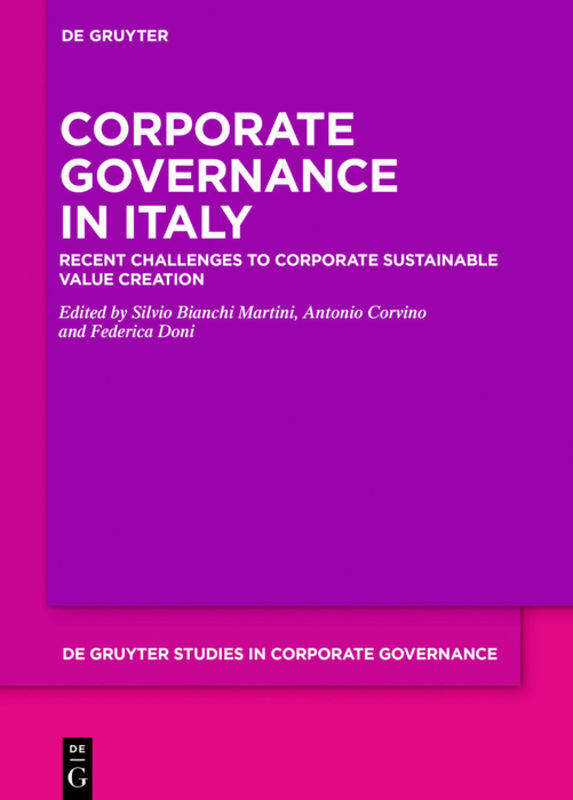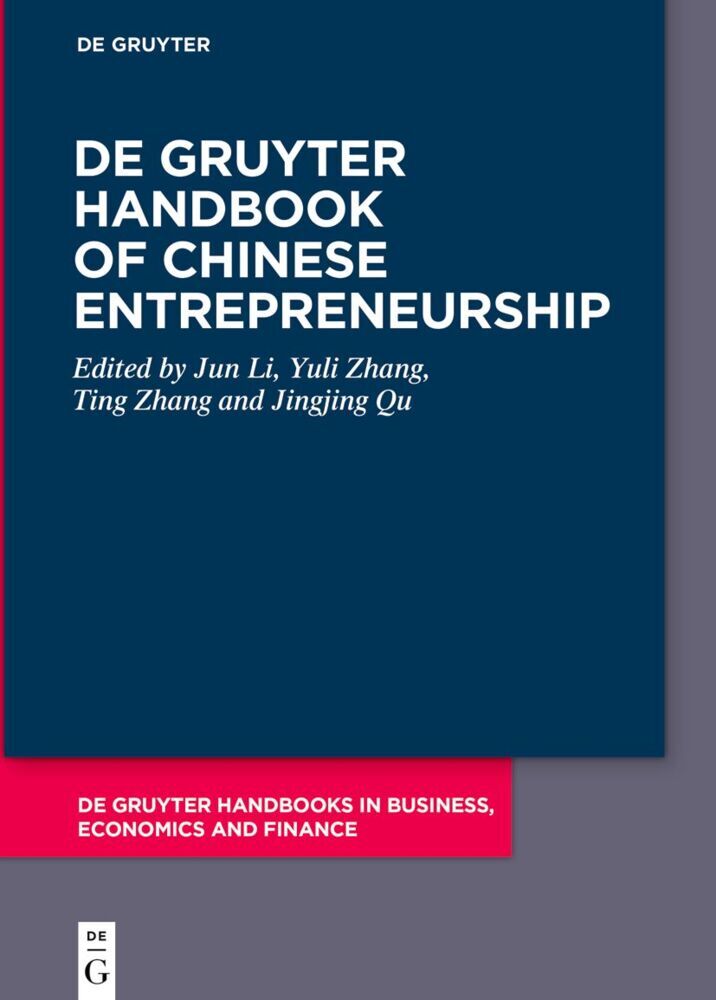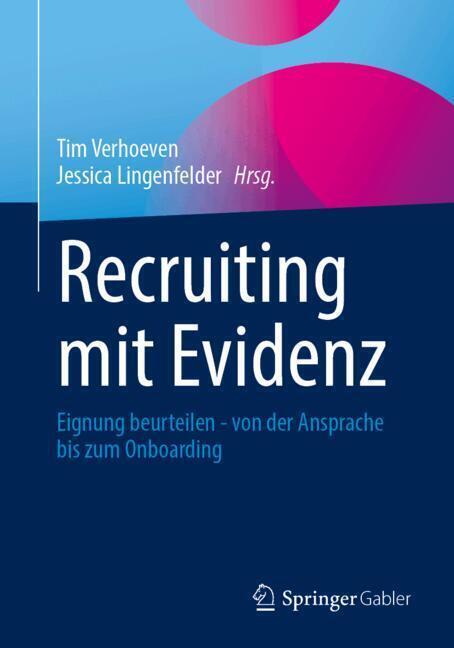International Small and Medium-Sized Enterprises
Internationalization Patterns, Mode Changes, Configurations and Success Factors
With growing international business, small and medium-sized enterprises (SMEs) have been faced with increased competition, but also with enhanced opportunities. Edith Olejnik addresses four major issues within the context of SMEs' internationalization process: First, she identifies the three different internationalization patterns that SMEs take and analyzes how these patterns develop over time. Second, she looks at dynamic changes of foreign operation modes and the managerial reasons for these changes. Third, she derives an empirical classification of smaller family firms and profiles them using a comprehensive set of organizational variables. Fourth, she investigates the relationship between firm-level processes and dynamic capabilities in driving the international performance of SMEs. Based on theoretical considerations and empirical analyses this work provides important implications for research and management practice.
Dr. Edith Olejnik received her doctoral degree from the University of Trier, where she worked at the chair for Marketing and Retailing.
Dr. Edith Olejnik received her doctoral degree from the University of Trier, where she worked at the chair for Marketing and Retailing.
1;Foreword;6 2;Acknowledgments;8 3;Table of Contents;10 4;List of Figures and Tables;14 5;List of Abbreviations;16 6;A. Introduction;18 6.1;1. Focus;18 6.2;2. Research Gaps;19 6.2.1;2.1. Introduction;19 6.2.2;2.2. Literature Review;21 6.2.3;2.3. Research Objectives;28 6.3;3. Overall Framework;31 6.3.1;3.1. Introduction;31 6.3.2;3.2. Summarizing Model;31 6.3.3;3.3. Structure of and Contribution by the Studies;37 6.3.3.1;3.3.1 Determinants and Development of Internationalization Patterns;37 6.3.3.2;3.3.2 Change of Foreign Operation Modes;38 6.3.3.3;3.3.3 Configuration of International Family Firms;38 6.3.3.4;3.3.4 Processes, Dynamic Capabilities and International Performance;39 6.4;4. Further Remarks;40 7;B. Study 1: SMEs' Internationalization Patterns: Descriptives, Dynamics and Determinants;42 7.1;1. Introduction;42 7.2;2. Conceptualization and Hypotheses Development;43 7.2.1;2.1. Literature Review on Internationalization Patterns;43 7.2.2;2.2. Identifying Internationalization Patterns;46 7.2.3;2.3. Discussing the Determinants of Internationalization Patterns;48 7.3;3. Empirical Study;52 7.3.1;3.1. Empirical Design;52 7.3.2;3.2. Measurement;53 7.3.3;3.3. Method;56 7.4;4. Results;57 7.4.1;4.1. Internationalization Patterns;57 7.4.2;4.2. Description of the three Patterns and the Changes over Time;59 7.4.3;4.3. Determinants of Internationalization Patterns;64 7.5;5. Discussion and Conclusions;66 7.5.1;5.1. Theoretical and Managerial Implications;66 7.5.2;5.2. Limitations and Further Research;70 8;C. Study 2: Changes in Foreign Operation Modes: Stimuli for Increases versus Reductions;72 8.1;1. Introduction;72 8.2;2. Literature Review;73 8.2.1;2.1. Economic-strategic and Behavioural Perspectives;73 8.2.2;2.2. Empirical Results on Mode Changes;74 8.3;3. Conceptualization and Hypotheses Development;76 8.3.1;3.1. Conceptual Framework;76 8.3.2;3.2. Mode Increases and Mode Reductions;77 8.3.3;3.3. Reasons for Mode Increase and Reductions;77 8.3.3.1;3.3.1 Performance in the Host Market;77 8.3.3.2;3.3.2 Firms' Internal Environment;78 8.3.3.3;3.3.3 Firms' External Environment;79 8.3.3.4;3.3.4 Managerial Attitudes;80 8.4;4. Design of the Empirical Study;81 8.4.1;4.1. Sample;81 8.4.2;4.2. Measurement;82 8.4.2.1;4.2.1 Dependent Variable;82 8.4.2.2;4.2.2 Independent Variables;82 8.4.2.3;4.2.3 Control Variables;83 8.4.3;4.3. Method;83 8.5;5. Results;84 8.5.1;5.1. Types of Mode Change;84 8.5.2;5.2. Importance of Stimuli for Mode Change;85 8.5.3;5.3. Magnitudes of Stimuli for Mode Change;87 8.6;6. Discussion;88 8.6.1;6.1. Overall Conclusions;88 8.6.2;6.2. Conclusions by Comparing Results;88 8.6.3;6.3. Conclusions for Theory and Practice;89 8.7;7. Limitations and Further Research;91 9;D. Study 3: A Taxonomy of Small and Medium-sized International Family Firms;92 9.1;1. Introduction;92 9.2;2. Literature Review;94 9.3;3. Theoretical Background and Conceptual Framework;95 9.3.1;3.1. Conceptual Framework of the Study;96 9.3.2;3.2. Culture;98 9.3.3;3.3. Strategy;99 9.3.4;3.4. Structure;100 9.3.5;3.5. International Performance;101 9.4;4. Empirical Study;102 9.4.1;4.1. Measurement;103 9.4.2;4.2. Method;107 9.5;5. Results;108 9.6;6. Discussion;114 9.7;7. Limitations and Further Research;116 10;E. Study 4: Linking Processes and Dynamic Capabilities of International SMEs: The Mediating Effect of International Entrepreneur Orientation;118 10.1;1. Introduction;118 10.2;2. Theoretical Background;119 10.3;3. Hypothesis Development;123 10.3.1;3.1. International Entrepreneurial Orientation;123 10.3.2;3.2. Scanning Processes;124 10.3.3;3.3. Planning Processes;126 10.3.4;3.4. Reciprocity of Processes and International Entrepreneurial Orientation;127 10.4;4. Empirical Study;128 10.4.1;4.1. Sample;128 10.4.2;4.2. Measurements;130 10.4.3;4.3. Method;135 10.5;5. Results;136 10.6;6. Discussion and Conclusions;139 10.7;7. Limitations and Directions for Further Research;142 11;F. Final Remarks;144 11.1;1. Discussion and Conclusions;144 11.1.1;1.1. Core Results;144 11.1.2;
Olejnik, Edith
| ISBN | 9783658048761 |
|---|---|
| Artikelnummer | 9783658048761 |
| Medientyp | E-Book - PDF |
| Auflage | 2. Aufl. |
| Copyrightjahr | 2014 |
| Verlag | Springer Gabler |
| Umfang | 200 Seiten |
| Sprache | Englisch |
| Kopierschutz | Digitales Wasserzeichen |

